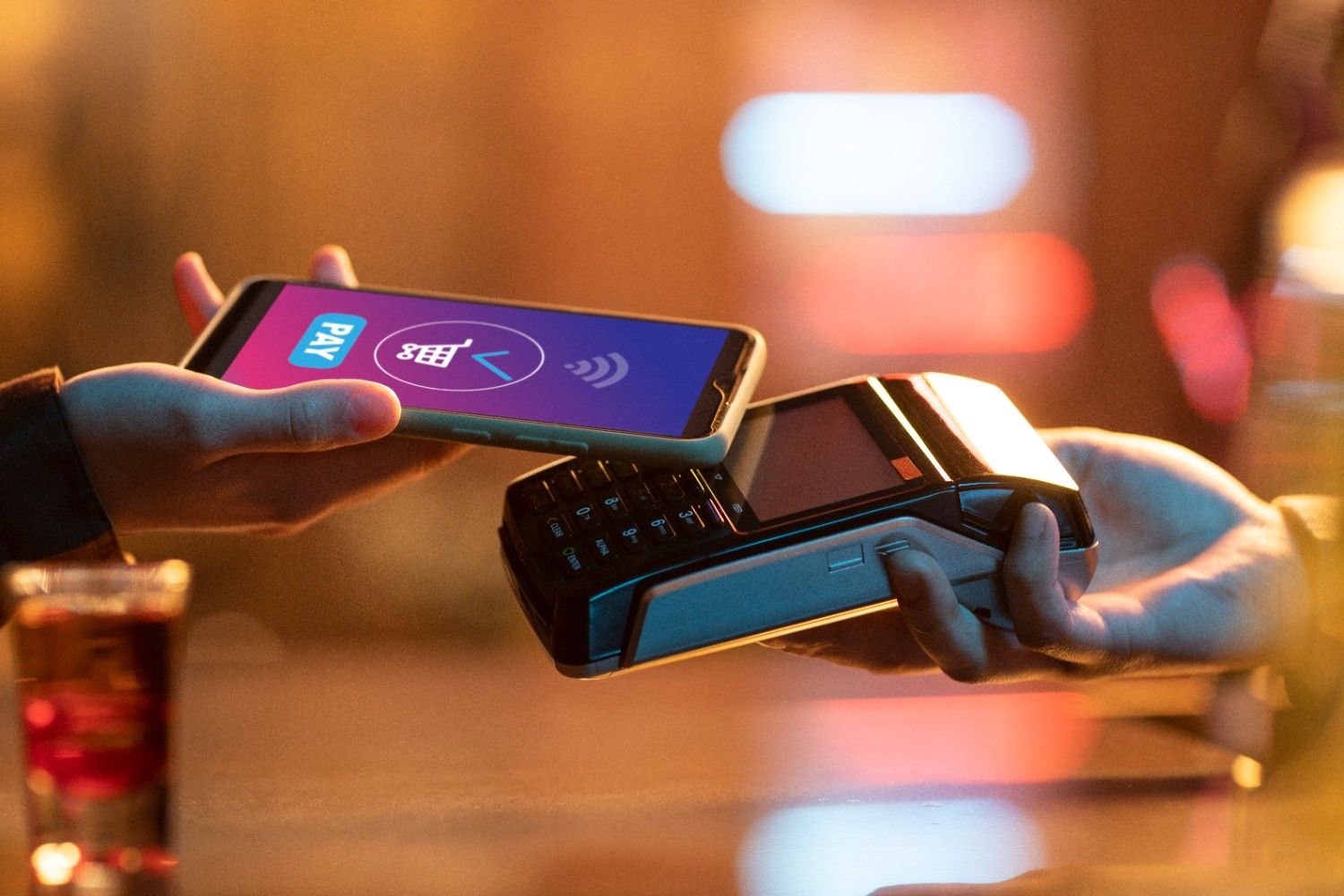Providing quick, safe, and convenient methods to manage transactions, mobile payment systems have transformed the way companies and consumers interact. Whether you run a business or use it as a consumer, it’s essential to know which one is most suitable for your circumstances, as these systems become increasingly common. New mobile payment options featuring cutting-edge technology and enhanced security elements are starting to surface entering 2025. With an eye toward their features, security, and simplicity of use, this paper examines in-depth the top mobile payment systems of 2025. We will also look at how NFC technology runs various systems and stress which options would be best for small companies.
What is a Mobile Payment System?
A mobile payment system allows users to make transactions using smartphones or other wireless devices through apps, NFC, QR codes, or mobile wallets. These systems eliminate the need for physical cash or cards and are integrated with banks or digital wallets to offer seamless financial experiences. Users of a mobile payment system can pay with cell phones, tablets, or smartwatches, among other mobile devices. Cashless transactions made possible by these platforms give consumers and companies both security and ease. Often used with mobile wallet payment systems, which save digital credit or debit cards, they are
Using technologies such as NFC (Near Field Communication), QR codes, and direct carrier billing, mobile payment solutions eradicate the need for actual cards or cash. Making safe, contactless payments with a tap or scan is therefore simple.
How does NFC technology find use in mobile payment systems?
Most contactless payment systems are now built on NFC (Near Field Communication). Usually smaller than four centimetres, it lets mobile devices and payment terminals interact safely across small distances.
Here is a closer examination of how mobile payment systems use NFC technology:
- NFC technology safely sends payment information from the mobile device to the payment terminal.
- When a user touches their phone to an NFC-activated terminal, the encrypted data is delivered and handled right away.
- To finish the transaction, mobile payment systems employing NFC can call for extra layers of authentication PINs or biometric data like a fingerprint or facial recognition.
NFC powers many well-known mobile wallet payment systems, including Apple Pay, Google Pay, and Samsung Pay, enabling consumers to quickly and securely pay with just a tap.
Characteristics of the Future Mobile Payment Systems in 2025
Several significant characteristics set out the best mobile payment systems of 2025. Let me dissect them:
- Simple Use Easiness
Whether you handle accounts or payments, a decent mobile payment system should be simple to set up and use. The interface should be straightforward so that users may finish transactions fast, free from technological problems.
- Security:
Any payment system—but particularly mobile— depends on security. To maintain financial data securely, the finest systems combine multi-factor authentication (MFA), tokenisation, and encryption. These layers of security assist in stopping user account fraud and illegal access.
- Compatibility
Compatibility rules the digital terrain of today. Working across both iOS and Android, the top mobile wallet payment systems can readily interface with many mobile wallets, point-of-sale (POS) systems, and accounting software.
- Scalability
Companies expand, hence your payment system should also expand. Without creating disruptions, a scalable mobile payment system can manage growing transaction volumes, interface with new technologies, and change with corporate demands.
What is the Best Mobile Payment System?
- Apple Pay
Still among the most often used mobile wallet payment systems is Apple Pay. It runs easily with Apple products, including iPads, Apple Watches, and iPhones. The technology is accepted in many physical establishments, apps, and online platforms all over and guarantees safe payments using Touch ID or Face ID.
- Pay with Google or Google Pay
Another top mobile payment method available on Android devices is Google Pay. It provides consumers with a convenient and safe method to pay at stores, apps, and websites and links with other Google services such as Google Maps. Features like transaction history and loyalty awards also abound here.
- Galaxy Pay
By being dual compatible with NFC and Magnetic Secure Transmission (MST), Samsung Pay distinguishes itself and lets it operate with a larger spectrum of terminals than other systems. This adaptability qualifies it as a powerful competitor for companies and consumers equally.
Top Mobile Payment Systems Designed for Start-ups
Affordable and adaptable mobile payment systems that let small enterprises quickly handle transactions are much needed. The best possibilities for 2025 are as follows:
- Square:
Square is among the most often used mobile payment options available to small companies. For startups or small businesses, it provides a simple price structure free of monthly expenses. Its free companion POS app allows companies to collect payments from anywhere using its mobile card reader.
- PayPal Right here
PayPal Here is a mobile payment tool meant especially for small companies. It provides quick financial access and facilitates payments via card, mobile wallets, or the Internet. Small businesses find it simple to accept payments from a worldwide clientele because of PayPal’s great popularity.
- Stripe
E-commerce companies specifically find Stripe to be a fit. It offers tailored APIs that let companies include payment processing right into their websites and mobile apps. Stripe is scalable and adaptable since it handles online and in-person payments as well.
What distinguishes mobile wallets from mobile payment systems?
Although they are sometimes used synonymously, mobile payment systems and mobile wallet payment systems differ in some important ways.
- Mobile payment systems are a general class of technology allowing mobile transactions. To handle payments, these systems can link directly to a credit card or bank account of a user.
- One subclass of mobile payment systems is mobile wallet payment systems. Stored digital versions of your debit or credit cards, a mobile wallet lets you pay using your mobile device.
Though not all mobile payment systems operate as mobile wallets, all mobile wallets are mobile payment systems.
How Should One Select the Ideal Mobile Payment System?
Choosing the correct mobile payment method could prove challenging. The following should help you:
- Corporate Requirements
While larger companies might need scalability to manage high transaction volumes, small firms could give low fees top priority.
- Security
Search for systems with two-factor authentication, tokenizing, and encryption among other capabilities. These will guard private consumer information from fraud.
- Integration’s ease
Your mobile payment solution should fit your current hardware and software, which includes accounting tools and POS systems, therefore, lowering the demand for costly updates.
- Cost
Varying systems have varying cost structures including per-transaction prices, monthly fees, and startup fees. Free point of sale systems like Square may especially appeal to small businesses.
- Customer Support
Resolving any problems that could develop during transactions depends on consistent customer service. Make sure the solution you choose offers 24/7 support.
Final Remarks:
The realm of mobile payment systems keeps changing as we approach 2025. More effective payment choices are helping companies and consumers both as NFC technologies enhance security measures and user-friendly interfaces, and NFC technology itself becomes more prevalent. There are many choices to pick from whether your business is small and you’re looking for the best mobile card payment system or a customer searching for a trustworthy mobile wallet. You may boldly choose the ideal mobile payment solution for your needs by weighing elements including scalability, security, and simplicity of use.
Answers to FAQs
1. Which Technology is commonly used for Mobile Payments?
Near Field Communication (NFC), QR codes, and mobile wallets (such as Apple Pay, Google Pay, and Samsung Wallet) are the most widely implemented technologies to make mobile payments, and are frequently accompanied by tokenisation and biometric authentication to provide security.
2. In what ways would a mobile wallet differ from a mobile payment system?
While a mobile wallet especially holds and controls digital versions of payment cards, a mobile payment system is a broad category that helps with mobile transactions.
3. How to use a mobile phone as a payment method?
Download a mobile wallet (such as Apple Pay or Google Pay), enter your card or bank details, and tap your phone on a contactless terminal or scan a QR code to pay.
4. How to create a mobile payment system?
Build a secure application or platform with payment gateways APIs (such as Stripe, PayPal), add user authentication, connect to banks or cards, add NFC or QR code payments, and be PCI-DSS and local financial regulations compliant.
5. What are the three types of mobile payments?
NFC (Near Field Communication): Tap-to-pay phones at contactless terminals (e.g. Apple Pay, Google Pay).
QR Code Payments: Pay through QR codes (e.g. Alipay, JazzCash)
Mobile Wallet Payments: In-app or online payments with stored card or bank data (e.g. PayPal, Samsung Wallet).





